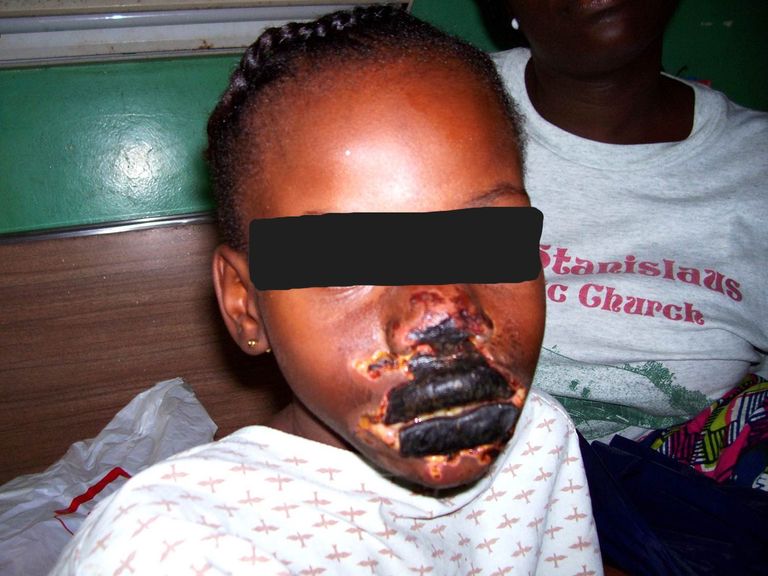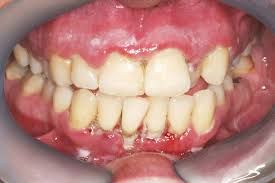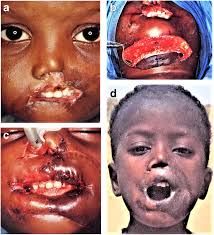Noma patient may suffer greatest setback from societal discrimination owing to the unesthetic facial structure from Noma disease . In some communities, some do a have gullible thought of that Noma is a contagious and communicable disease, so they avoid and isolate themselves from Noma sufferers and survivors to avoid contracting it.
In some cases as worst as it can be, some parents may hide and isolate the afflicted children within the home because of social stigma and surgical procedures which can prevent them from getting treatment.
Some people have superstitious believe noma may be due to super natural and celestial powers black evil or even generational curse.
Statistically based on a 1997 report, roughly 770,000 people in the world live have Noma scarring and sequelae after mostly from gangrenous stage of the attac.
Another illiteracy on some of some people is that they regard Noma as a disease of shame and curse thereby sometimes isolating their children even from health facilities rather than being sent to receive the necessary treatments.
Another issue is that in Nigeria some household may decide to seek local herbalist assistance rather than medical facility.
For example, a study of 7,185 Noma infected people across Nigeria, only about 19% were observed to have reported to a hospital upon the onset of the facial lesion. The about 47% took 1–3 weeks to visit a health centre and last but not least the rest took a longer period of time to make a visit to hospital in which local herbalist consumption or stigmatisation have been documented to be the major cause.
Children and other Noma survivors in Africa are helped by a few international charitable organizations, including as Facing Africa, registered UK organisation that helps affected Ethiopians.
"There is one dedicated noma hospital in Nigeria, the Noma Children Hospital Sokoto, staffed by resident and visiting medical teams supported by Médecins Sans Frontières. Some of the staff are noma survivors. In other countries, such as Ethiopia, international charities work in collaboration with the local health care system to provide complex reconstructive surgery which can give back facial functions such as eating, speaking and smiling. Teams of volunteer medics coming from abroad are often needed to support the local capacity to address the most severe cases, which can be extremely challenging even for senior maxillofacial surgeons. On 10 June 2010, the work of such volunteer surgeons was featured in a UK BBC Two documentary presented by Ben Fogle, Make Me a New Face: Hope for Africa's Hidden Children."Source
Another Noma-like disesase is Noma neonatorum which is a severe infection affecting very young or newborn children in poverty ridden environments. In this disease a gangrenous infection spreads across the oral, nasal and/or anal areas, and is frequently fatal in nature and appearance.
The presentation of lesions is similar to those found in noma though it should not be misdiagnosed as Noma because what makes it different from Noma it is caused by a bacterium called Pseudomonas aeruginosa.
Right from the name, it implies the disesase affects newborn and neonates that is very young children unlike the generally known Cancrum Oris.
That's all as regards this post. In the subsequent posts another oral infection would be discussed at length. Thanks for the usual support and decorum given to go through the blog as that is highly appreciated.
Happy Blogging and Reading 💥💥🦷
Video from AFHEG FOUNDATION YouTuber




Telegram and Whatsapp